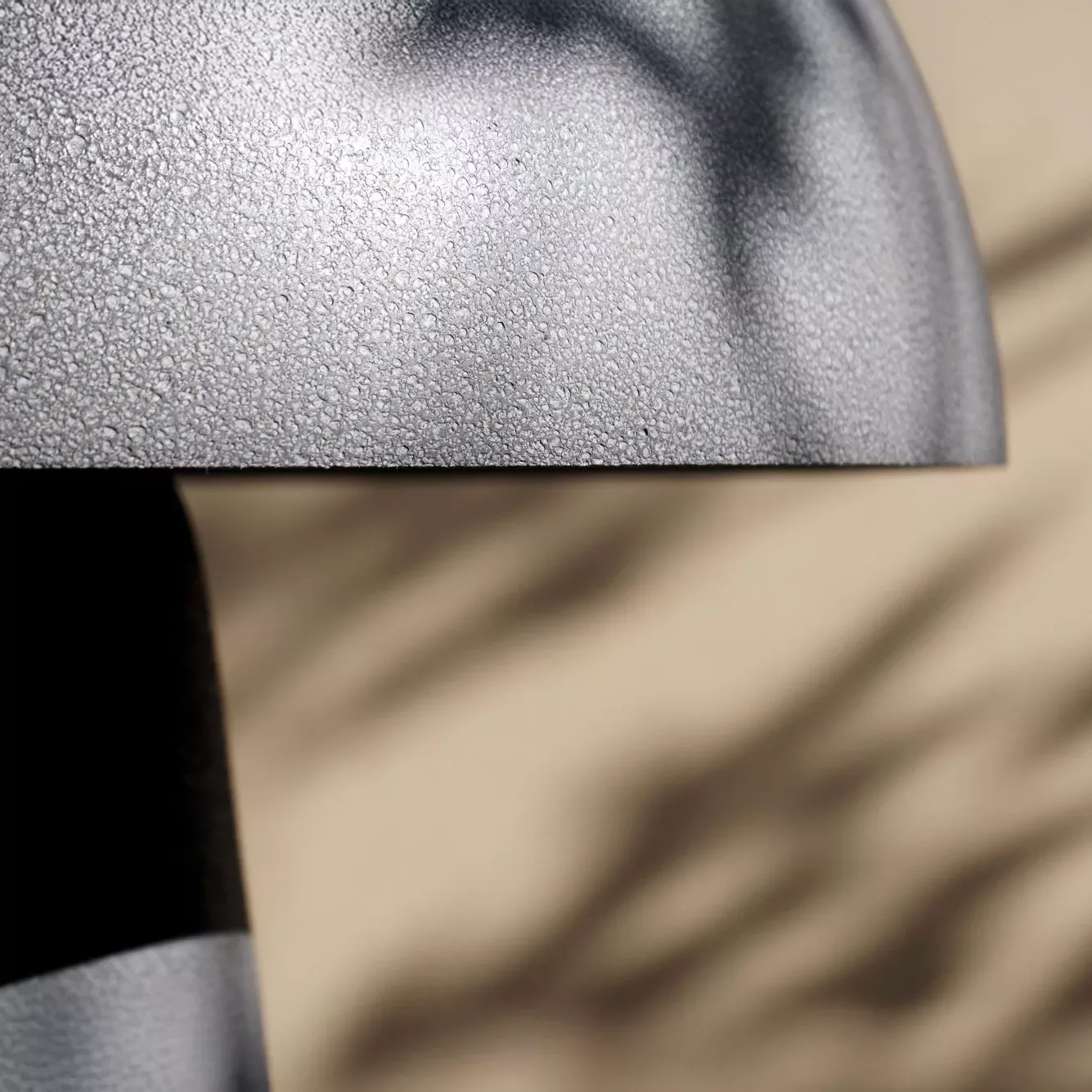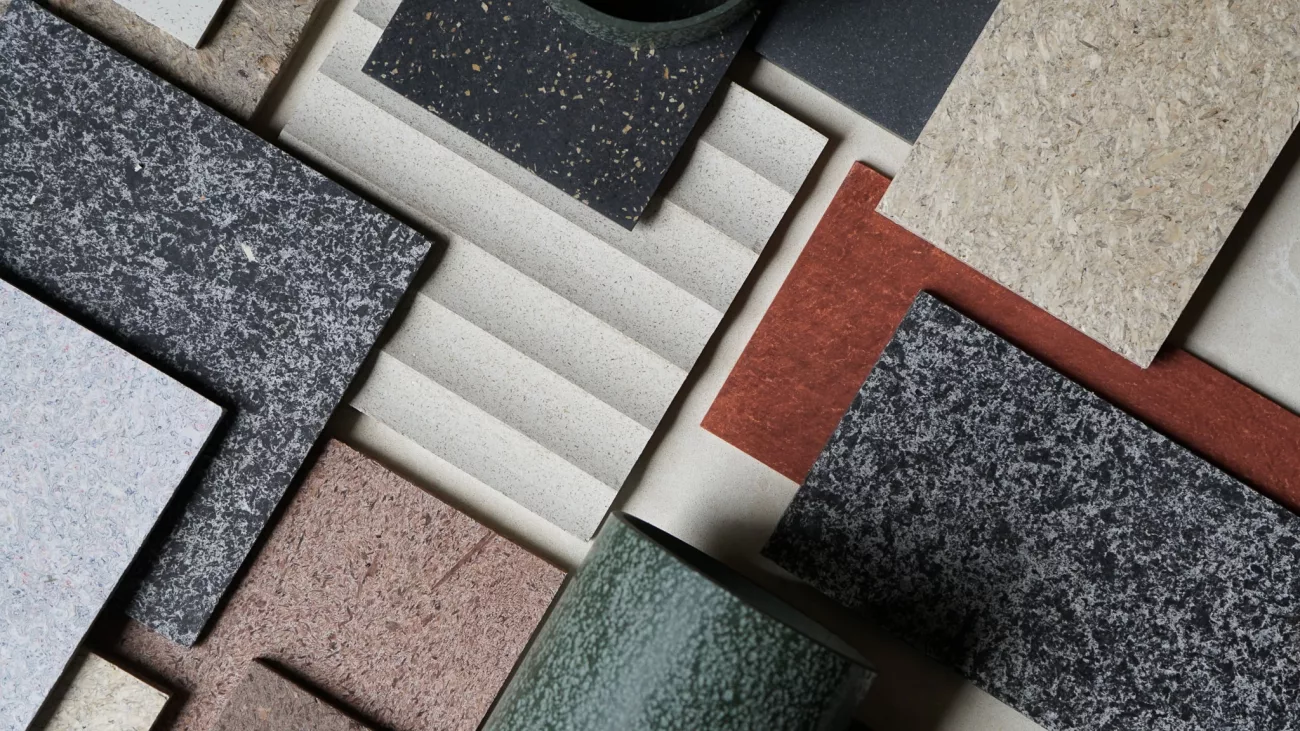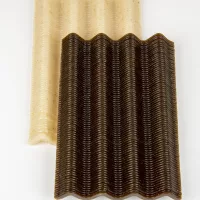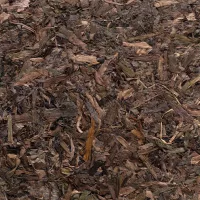
How Organic Waste and Cellulose Are Transformed into Sustainable Materials
How Organic Waste and Cellulose Are Transformed into Sustainable Materials
In a world increasingly shaped by climate concerns and material scarcity, organic waste and cellulose-rich plant fibres are emerging as powerful feedstocks for new circular materials. Once discarded as low-value byproducts, materials like eggshells, hazelnut shells and agricultural plant fibres are now being transformed into high-performance products. Through advanced techniques such as injection moulding, pressing, 3D printing and 3D spraying, these bio-based materials are being reimagined into functional and aesthetic objects. From wall panels and worktops to lighting, furniture and decorative finishes, organic waste is becoming a valuable regenerative design resource.
At Materials Assemble, we curate innovative materials made from organic waste, and cellulose. selected for their quality, environmental impact and compatibility with both residential and commercial projects. From hospitality spaces to offices, these materials provide designers and architects with responsible alternatives.
Understanding the Materials
As we explore the transformation of organic waste and cellulose into sustainable materials, it is important to understand the nature of the raw materials themselves:
- Hemp Fibres - strong and biodegradable, hemp fibres come from the stalks of the hemp plant. They provide natural reinforcement and are valued for their durability.
- Agricultural Waste - this category includes plant residues like tobacco leaves, coffee husks and grape peels. Rich in cellulose, these byproducts are repurposed into valuable material.
- Eggshells - composed mostly of calcium carbonate, eggshells add rigidity and strength when integrated into composites, helping reduce reliance on synthetic fillers.
- Hazelnut Shells - tough and cellulose-rich, hazelnut shells are crushed and combined with binders to form sturdy boards and surfaces ideal for furniture and interiors.
- Eelgrass Waste - a coastal byproducts often collected from shores, eelgrass is naturally durable and resistant to decay. When processed into boards or mats, it offers acoustic and insulating properties.
Applications
- 3D Printed Decorative Objects - materials made from plant fibres and agricultural waste can be formulated into printable filaments. These are ideal for producing custom forms, decorative objects or prototypes using additive manufacturing, offering flexibility and minimal waste.
- Furniture Pieces (3D Pieces) - using a 3D spraying technique, fibre-based mixtures are sprayed onto mould to create seamless and sculptural furniture forms. This process allows for organic shapes and textures using sustainable materials like hemp.
- Pressed Boards (Countertops & Worktops) - natural byproducts such as eggshells and hazelnut shells are compressed into dense, durable boards.
- Wall Panels - Lightweight yet sturdy panels made from agricultural and plant waste offer decorative and acoustic properties.
- Acoustic Panels - materials like eelgrass and plant fibres can be formed into panels or mats with natural sound absorbing qualities. These acoustic panels reduce noise pollution while contributing to a healthy, breathable interior.
Benefits of Using Organic Waste and Cellulose Based Materials
- Eco-friendly and Renewable - These materials are derived from natural, renewable resources or waste byproducts, reducing reliance on fossil fuels and virgin raw materials.
- Waste Reduction - this category includes plant residues like tobacco leaves, coffee husks and grape peels. Rich in cellulose, these byproducts are repurposed into valuable materials.
- Biodegradability - Many of these materials breakdown naturally at the end of their lifecycle, minimising long-term environmental impact.
- Durability and Strength - when processed properly, fibres like hemp and hard shells like eggshells and hazelnut shells provide excellent mechanical properties suitable for demanding applications.
- Versatility - they can be moulded, pressed, 3D printed and 3D sprayed into diverse products.
- Unique Aesthetic Qualities - natural textures, colours and patterns of these materials add warmth and character to interiors, distinguishing them from conventional synthetic materials.
What to Consider When Working with These Materials
When working with bio-based materials, it is important to understand their natural origins bring both unique advantages and specific performance considerations. Unlike synthetic, petroleum materials, these bio-based options are more responsive to their environment. They can expand or contract slightly depending on humidity levels, temperature changes and UV exposure. It is often advisable to install them using supportive frames, flexible joints or mechanical fixings to accommodate subtle movement over time.
In terms of appearance, these materials derive their colour from the natural pigments of their raw ingredients, resulting in an earthy, warm and organic look. While custom colours are possible, designers should note that vivid synthetic tones like neon greens and bright blues are generally out of reach due to the natural materials used. Equally important is accepting the inherent imperfections, tonal irregularities, and surface variations that come with these materials. These characteristics are not flaws but expressions of their organic origin and a key part of their aesthetic and tactile appeal. Embracing these inconsistencies can lead to more authentic, character-rich spaces that reflect the materials' life cycles and stories.
Beyond their environmental advantages, they contribute positively to human health and indoor air quality. Because these materials are made without synthetic binders, formaldehyde-based adhesives, or petroleum-derived additives, they are naturally low in VOCs. This means they do not off-gas toxic chemicals into the air, a common issue with many conventional building products that can lead to headaches, allergies, respiratory irritation, and long-term exposure risks. Many of these materials are breathable, helping to regulate interior humidity and prevent issues like mold growth or indoor air stagnation. Their tactile warmth, subtle scent, and organic aesthetic also contribute to a more calming, sensory-rich atmosphere, aligning with biophilic design principles that connect occupants more closely to nature.
In short, by specifying materials made from natural waste sources, designers aren’t just making sustainable choices, they’re also creating spaces that actively support human health, comfort, and wellbeing, while celebrating the beauty of natural variation and imperfection.
How Designers Can Get involved
Designers play a critical role in shaping the future of materials, not just by specifying them but by helping clients understand their value, aesthetic and performance. One of the first ways to get involved is by exploring curated platforms like Materials Assemble. Every material is carefully vetted for sustainability, quality and design relevance. Our team selects and showcases materials that meet both environmental standards and functional performance making it easier for designers to discover, trust and specify bio-based alternatives. When considering these materials into projects, designers can start small by integrating bio-based boards into joinery or 3D printed or sprayed furniture pieces for bespoke installations.
Collaboration plays a vital role in successfully integrating sustainable materials into design projects. Designers are encouraged to engage with material producers, fabricators and sustainability consultants early in the process to better understand these materials. By facilitating these conversations and making informed decisions, designers can help shift client perceptions. To support this shift, Materials Assemble offers presentations, factory visits, collaborative projects and consultancy services designed to inform and empower designers. These initiatives help bridge the gap between innovative material development and practical implementation, ensuring that sustainability is embedded not only in concept, but also in execution.






